Amidst the myriad options, latex emerges as a standout choice for both pillows and mattress toppers.
In this exploration, we delve beyond the surface to uncover the distinctive benefits of latex, its comparison with memory foam, and its remarkable suitability for allergy-conscious individuals.
Latex is the milky sap of the rubber tree, Hevea brasiliensis. Therapeutic Pillow's natural rubber is produced in Malaysia, where trees are tapped for the natural rubber by cutting a spiral groove in the bark and placing a spout and collection cup at the base.
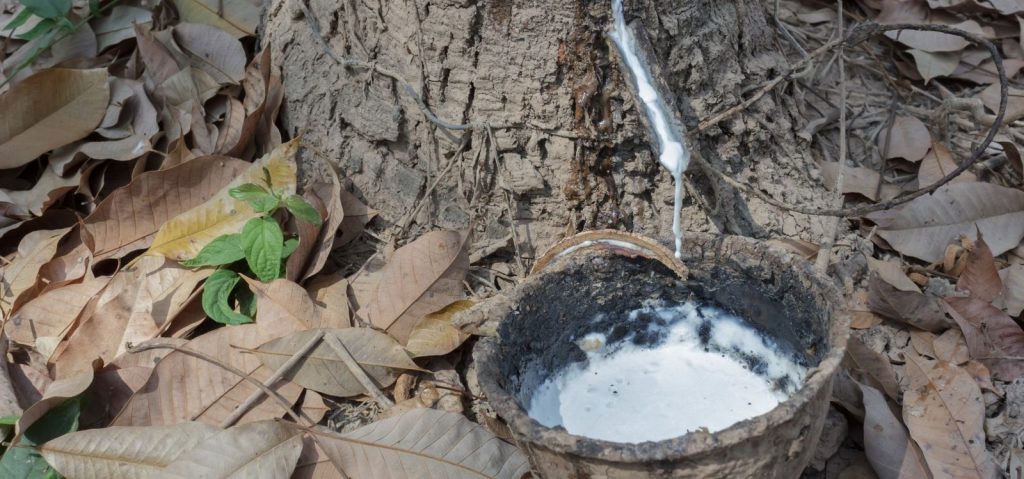
One week of daily harvesting from 30 rubber trees produces enough latex for just one pillow!
The natural rubber industry started in Malaysia when 9 plants were brought in from Brazil.
Malaysian Rubber Board is backed by years of R&D (established in 1925).
One of the areas of research is in the production of new clones for rubber trees. Clones are grown for 15 years in different areas before they are used for buds.
Latex production has been declining in Malaysia recently and is now 1.3 million hectares. Now 80% of small farmers with an average of 2.5 hectares on each farm.
The life span of latex rubber trees
Rubber trees have a life span of 25-30 years.
After 25 years of latex extraction the trunk of the tree is used for furniture production and the branches are used for fibre board.
The tree trunk provides a medium-density wood that is kiln-dried.
The rubber tree is deciduous losing all its leaves in January during a hot dry spell. With the new leaves come the flowers then the fruit. The green fruit slowly turns brown and on a hot afternoon between July and Sept, you can hear the cracking sound as the seed explodes from the fruit. This time is known as "Seed Fall".
Because seeds rapidly lose their viability if exposed to sun and rain the seeds are collected and put into a cold store or into a germination bed.
Latex seed germination
Seed germination takes 7-10 days
Moved to polybag
Green bud graft at 600mm.
The seed provides the rootstock and the graft provides the tree.
Green buds for grafting come from bush nurseries.
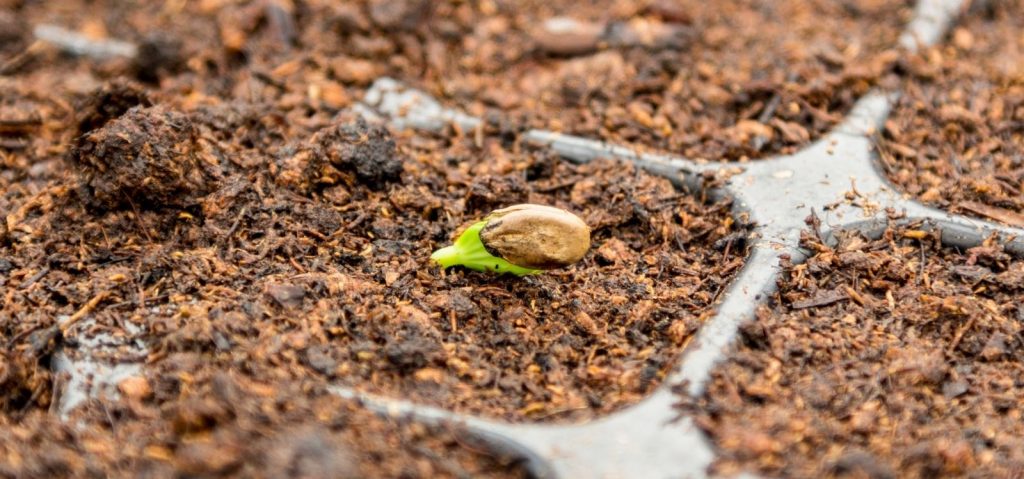
Grafting the rubber tree
When the seedling is 3 months old using the standard grafting technique a small patch is removed from the seedling and a green bud is grafted on and bandaged.
The graft is left for 1 month if the graft is successful the patch is green. The polythene bandage is removed and the tree is cut back. The seedling remains in the nursery for 2 stages of leaf and then planted out (about 6 months). Planting rate of 400 trees per hectare.
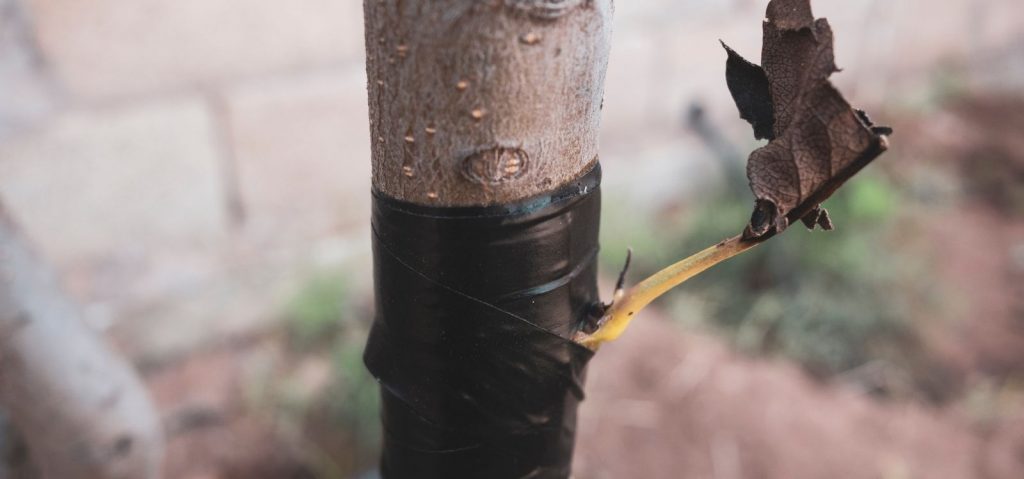
Latex tree extraction
Starts when the tree is 4-5 years old (when it is 45cm / 17" in circumference).
The tapping panel is a half spiral, starting about 150cm / 60" from the ground (about the height of the tapper). Each incision is 1-2mm
Change the sides of the tree every 5 years. 25 year cycle is:
- Cut down from left to right – Front (5 years)
- Cut down from left to right – Back (5 years)
- Cut down from left to right – Front (5 years)
- Cut down from left to right – Back (5 years)
- Upward tapping – (5 years)
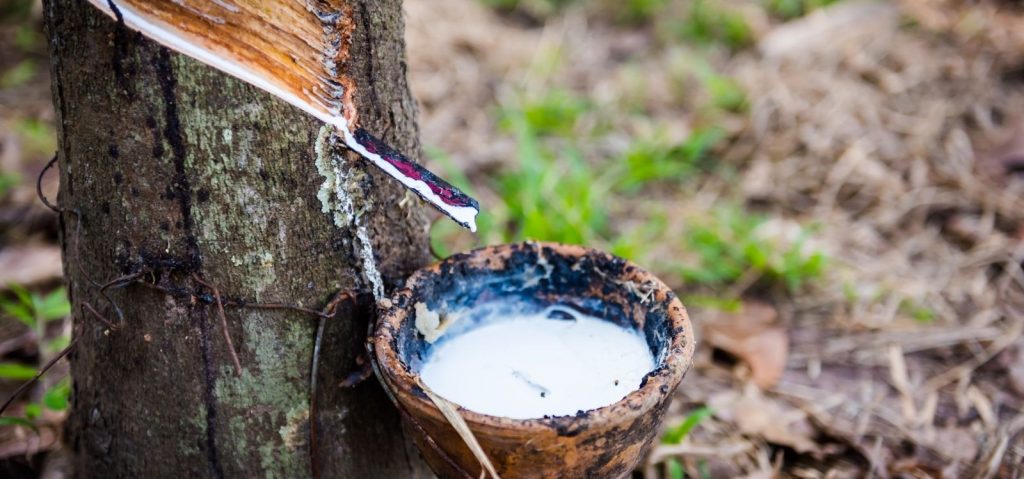
Tapping the rubber tree for its sap
Tapping is done early in the morning as long as it's not raining or the trees are not wet. (Maybe 100 out of 365 days a year).
A tapper taps 500 trees in about 3-3 ½ hours has a break and then collects the latex after 4-5 hours after tapping.
After 4-5 hours the latex vessels become blocked and the sap coagulates leaving a white strip of an elastic substance on the tree. This is known as "Tree lace"
Latex vessels run down from right to left and tapping is down from left to right to maximise production which is usually about ½ cup of latex which is 30-35% rubber and the rest is water. Trees produce their best yields in the first 5 years.
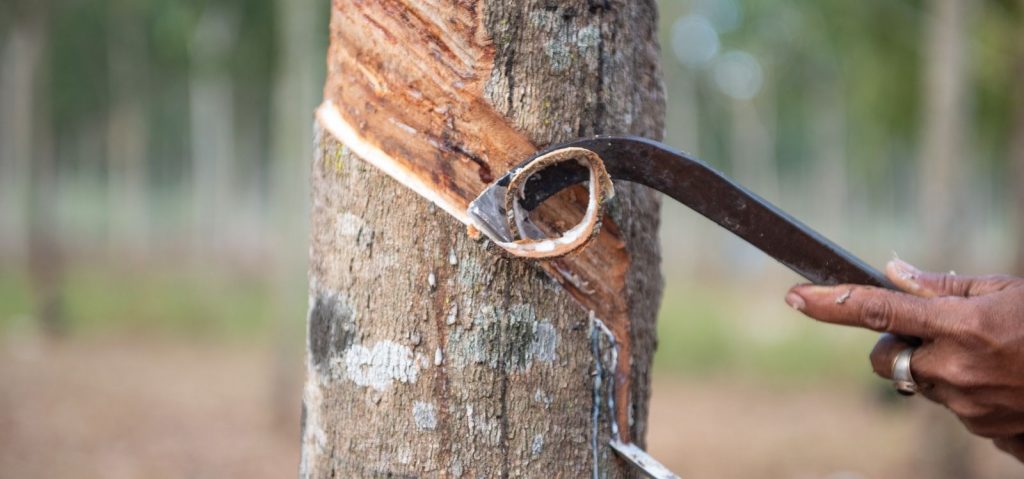
Latex vs. Memory Foam: A Winning Comparison:
When it comes to choosing the perfect sleep surface, latex and memory foam often take centre stage. While memory foam offers contouring support, latex stands out with its unique blend of responsiveness and cushioning. Unlike memory foam, which may retain heat, latex maintains a cooler sleeping environment, promoting uninterrupted slumber. The natural resilience of this rubber-like material ensures immediate bounce-back, perfect for those who prefer a more buoyant surface. Furthermore, this material exudes a gentle yet supportive feel, adapting to your body's contours while providing that touch of luxurious cushioning – an experience that epitomizes restful repose.

Allergies and the Latex Advantage:
For allergy-conscious individuals, latex provides a breath of fresh air. Unlike conventional materials that might attract dust mites and allergens, latex boasts inherent hypoallergenic properties. Its dense composition naturally deters the accumulation of dust mites, pollen, and other potential irritants, offering a cleaner and healthier sleep environment. When compared to memory foam, which can sometimes harbour allergens, this natural rubber emerges as a compelling option for those seeking a more allergy-friendly sleep surface.

Embrace Comfort with Our Pillows and Mattress Toppers:
At Therapeutic Pillows, we recognize the transformative potential of this elastic material for your sleep experience. Our latex pillows and mattress toppers embody the best of this material – offering the perfect balance of support, comfort, and allergen resistance. Crafted with meticulous attention to detail, our latex sleep essentials are designed to provide you with nights of unparalleled rest. Experience the future of sleep with our latex offerings – a testament to comfort, innovation, and well-being.
As you journey through the realm of sleep solutions, consider the profound advantages that latex brings to your sleep environment. From the sumptuous feel to the allergy-friendly nature, latex opens doors to a world where comfort and well-being converge, ensuring that each night's rest is a rejuvenating experience like no other.
Therapeutic Pillow has a variety of Natuelle Latex Products. If you would like more information please contact us we would love to hear from you.
Do you want to learn more? Read our Frequently Asked Questions for...
In modern society, some people are a lot more sensitive to a whole host of different products and airborne nasties.
With regards to polyurethane foam, history can only prove it is certainly not a risk.
In Australia alone thousands of tonnes of foam are produced and sold into areas such as bedding, furniture, automotive, yes products we are exposed to daily.
Hospitals for instance will not accept Latex foam as it is rubber-based, and all hospital mattresses are made from polyurethane foam.
 0
0 0
0No, down pillows are not necessarily bad for asthma. While some people with asthma may be sensitive to certain allergens, such as dust mites, which can be found in down feathers, it does not mean that all individuals with asthma will have a negative reaction to down pillows.
It is important to note that down pillows can be hypoallergenic, meaning they are designed to minimize the risk of triggering allergies or asthma symptoms. These pillows are often made with special materials or treated to reduce allergens. However, it is always recommended to check the product description or label to ensure that the down pillow you choose is hypoallergenic if you have asthma or allergies. Additionally, regularly washing and maintaining your pillow can help minimize allergens and keep it clean for a healthier sleep environment.
 0
0 0
0Duck feather pillows are not inherently cruel, but the ethical concerns lie in the sourcing and production processes. Feathers used in pillows can come from ducks that are raised for meat or from live-plucked ducks. Live-plucking involves removing feathers from ducks while they are still alive, which is considered inhumane and cruel. However, many reputable manufacturers now follow strict guidelines and source feathers from ducks that are raised for meat, ensuring that the feathers are a byproduct of the food industry and not obtained through live-plucking. To ensure you are purchasing ethically sourced feather pillows, look for certifications such as the Responsible Down Standard (RDS), which guarantees that the feathers used in the pillows are responsibly sourced and obtained without causing harm to the ducks.
It is important to be aware of the sourcing and production methods when considering feather pillows. By choosing pillows that are certified by organizations like RDS, you can support ethical practices and ensure that the feathers used are obtained without causing harm to ducks. This way, you can enjoy the comfort and support of feather pillows while also promoting animal welfare.
 2
2 0
0Yes, latex pillows can be beneficial for neck pain. Latex is a natural material derived from rubber trees, known for its supportive and contouring properties. These pillows are designed to provide proper alignment and support to the neck and head, which can help alleviate neck pain. Latex pillows offer a unique combination of softness and firmness, allowing them to conform to the shape of your neck while still providing adequate support. The natural elasticity of latex also helps to maintain the pillow's shape and prevent it from flattening over time. Additionally, latex pillows are hypoallergenic and resistant to dust mites, making them a suitable choice for individuals with allergies or asthma. Overall, latex pillows can offer a comfortable and supportive solution for those seeking relief from neck pain.
 0
0 0
0Latex pillows are indeed a good choice for many people. Made from natural latex derived from rubber trees, these pillows offer several benefits. Firstly, latex pillows provide excellent support and comfort for your head and neck. The natural elasticity of latex allows the pillow to conform to the shape of your head, providing optimal alignment and reducing pressure points. This can help alleviate neck and shoulder pain, promoting more restful sleep. Additionally, latex pillows are hypoallergenic and resistant to dust mites, mould, and mildew. This makes them a great option for those with allergies or asthma, as they can help minimize potential triggers. Overall, latex pillows offer a durable and supportive sleep surface, ensuring a comfortable and healthy night's rest.
 0
0 0
0








